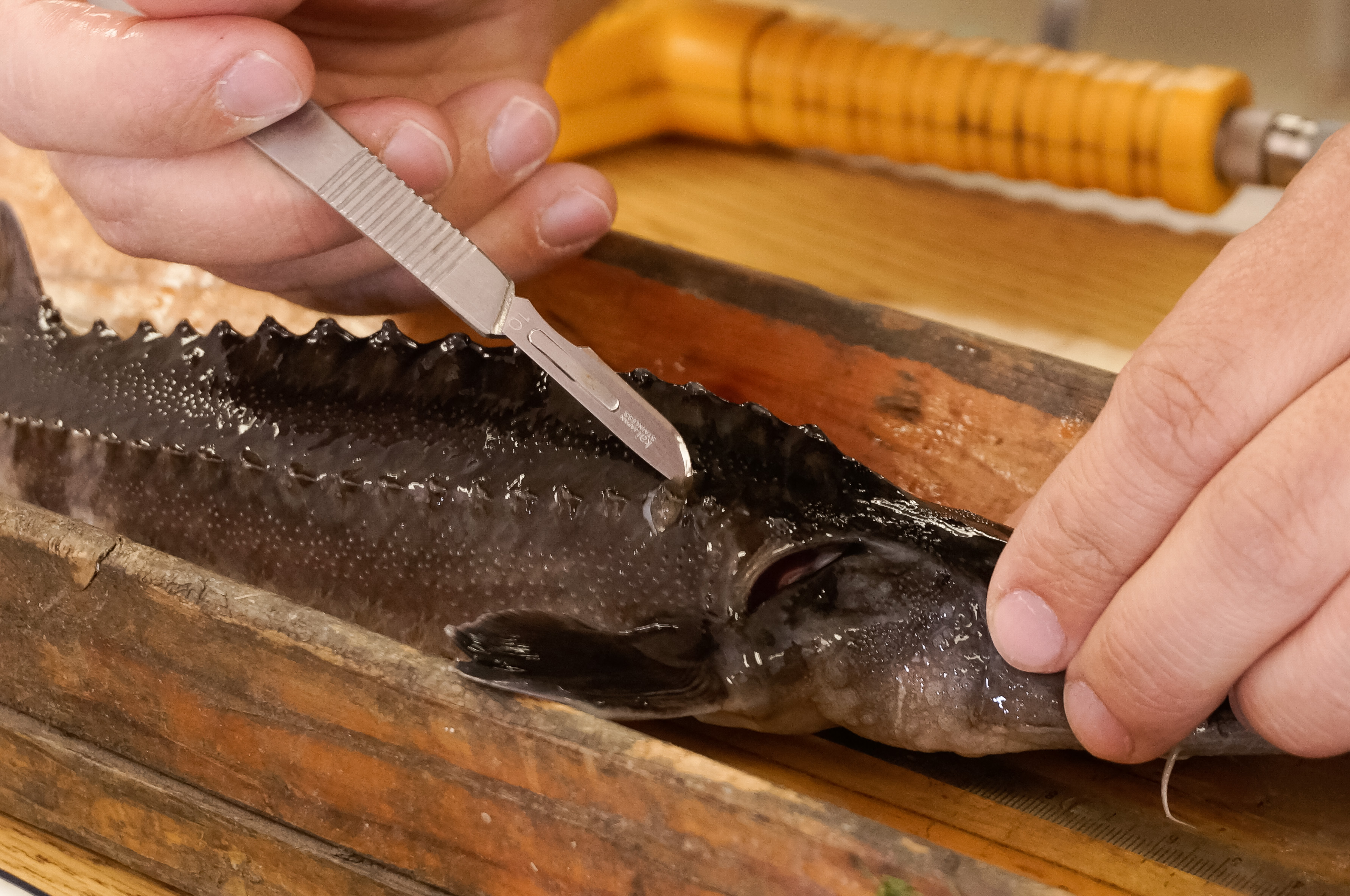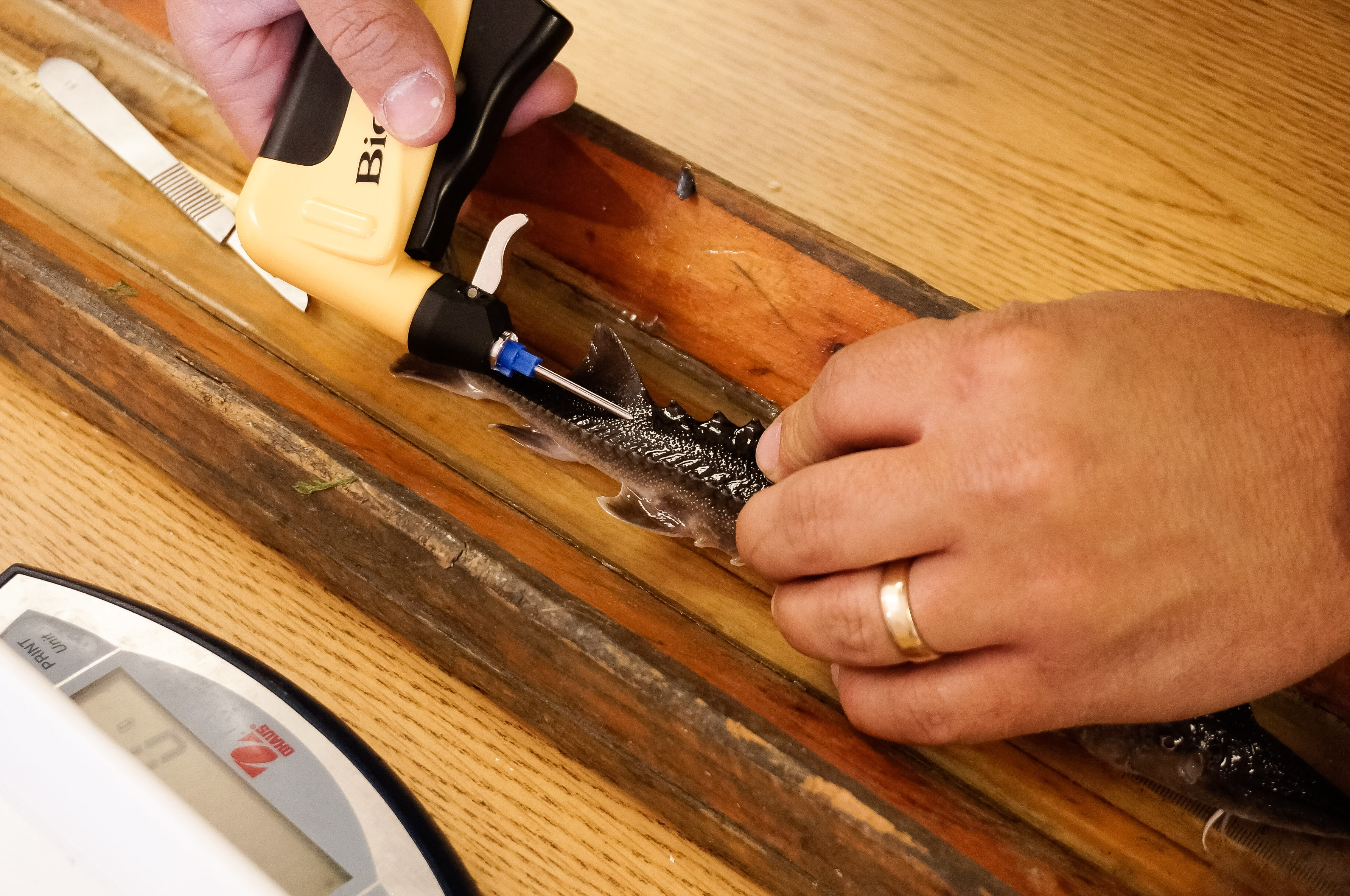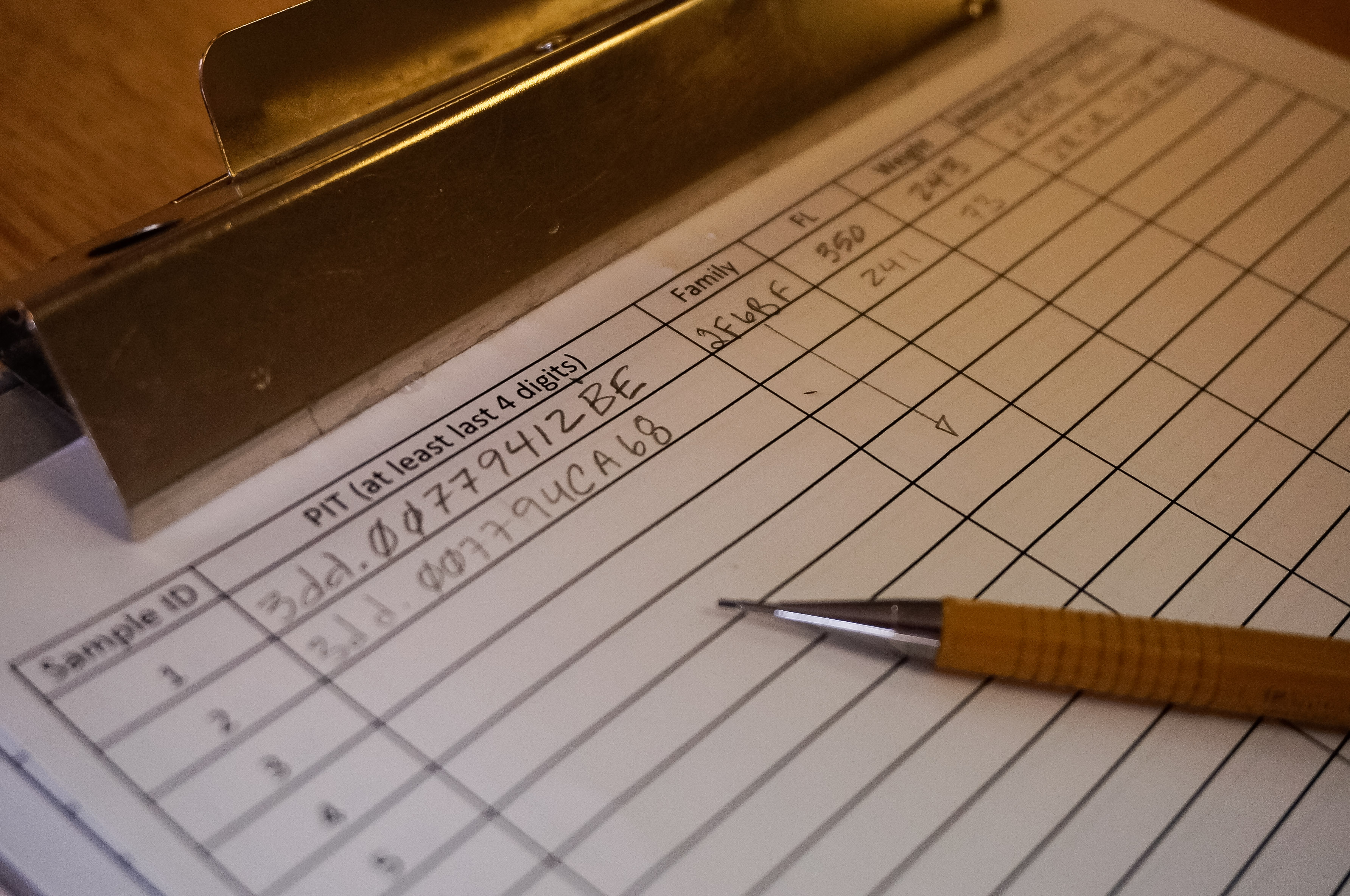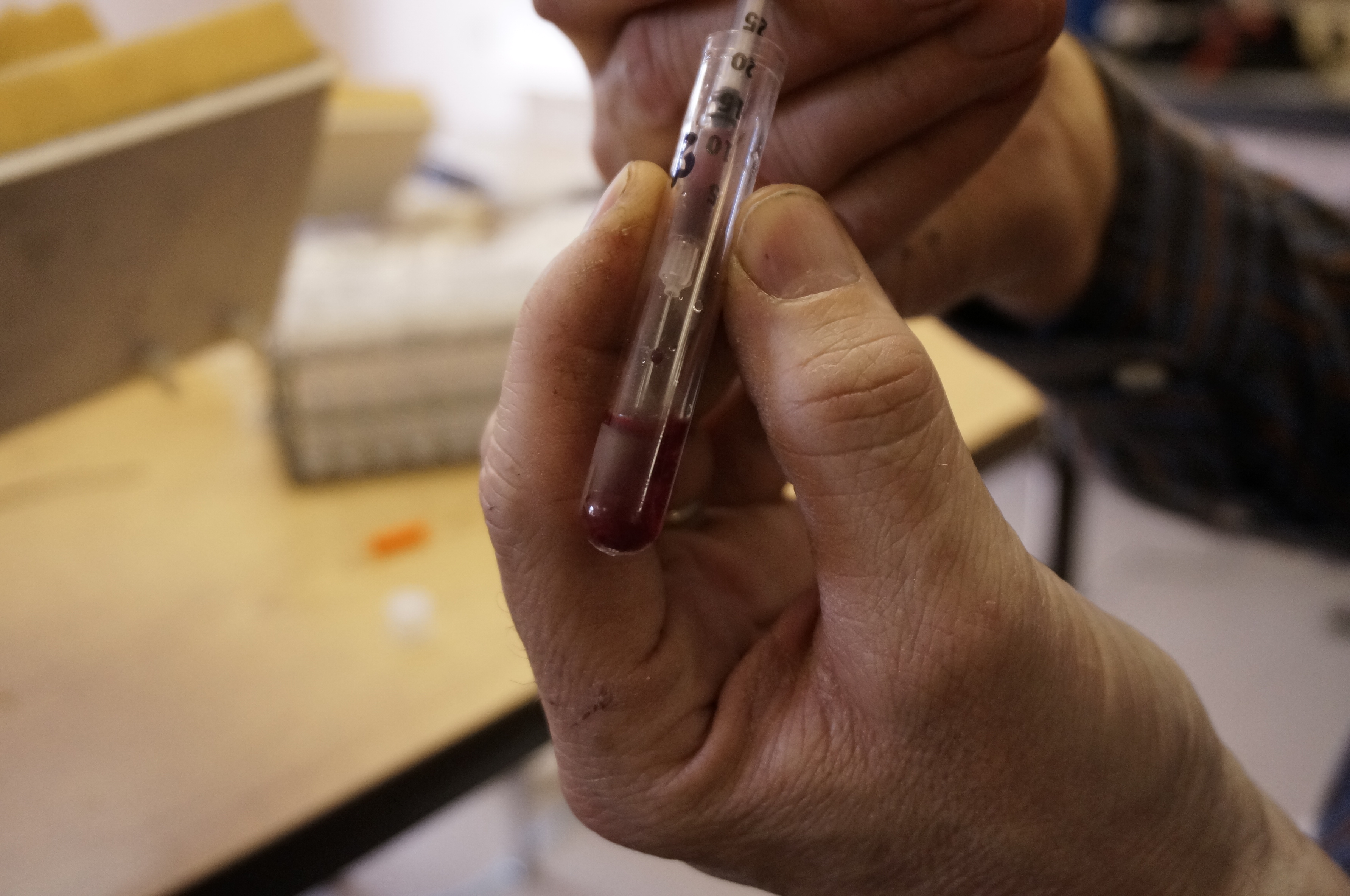
Photo: A young White Sturgeon is marked by removing a bony plate (scute) on the right side. Sturgeon live so long that they need a second mark in case their PIT-tag is lost or stops working.
If you missed any of the previous articles in the series, just hit any of the following links:
Part 1 of 7; Part 2 ; Part 3 ; Part 4; Part 5; Part 6
Biologists need to keep track of whether stocked sturgeon spawned from wild parents will help improve sturgeon populations in the Snake River. Tagging sturgeon is good way to keep track of them after they are released into the wild. Tags provide a huge amount of valuable information including survival, growth rates and even some migration information. After reaching the target size in the hatchery sturgeon are marked before being released into the middle Snake River.
 Photo: A small PIT-tagged is inserted into the muscle of juvenile sturgeon before being released into the wild. PIT-tags help track survival, growth and movement.
Photo: A small PIT-tagged is inserted into the muscle of juvenile sturgeon before being released into the wild. PIT-tags help track survival, growth and movement.
Hatchery sturgeon are tagged by using a tiny microchip PIT-tag (passive integrated transponder) and also by removing a scute – a small bony plate on the fish’s side. The PIT-tag gives the fish a unique identification number (just like a “microchip” for your dog or cat). Since sturgeon can live so long, they sometimes lose their PIT-tag. A scute mark is a backup to show biologists the fish is a hatchery sturgeon in case the PIT-tag is lost or stops working.
 Photo: Careful records are kept from each sturgeon when it is tagged so that it can be identified years later if encountered in the wild. This information is important years later to help understand how to improve sturgeon survival after being released.
Photo: Careful records are kept from each sturgeon when it is tagged so that it can be identified years later if encountered in the wild. This information is important years later to help understand how to improve sturgeon survival after being released.
Biologists examine sturgeon captured during surveys and keep track of tag numbers, fish size, and capture location. Information from tags can tell biologists which strategies are working the best to improve sturgeon populations. Tag information is critical to determine if things like stocking size, stocking age, stocking location, or genetic heritage can be changed to improve success. Tags also can tell us about how fast fish are growing and movement patterns based on where the fish was caught and last encountered.
 Photo:Idaho Power biologist Ken Lepla collects a sturgeon blood sample for genetic analysis in the lab. Blood samples can help track genetic diversity among family groups and other issues to avoid long-term problems that could impact conservation efforts.
Photo:Idaho Power biologist Ken Lepla collects a sturgeon blood sample for genetic analysis in the lab. Blood samples can help track genetic diversity among family groups and other issues to avoid long-term problems that could impact conservation efforts.
Once the tagging and marking are done, the young sturgeon are transported to the Snake River. For the CJ Strike and Swan Falls reaches, stocking usually happens in the fall after river water temperatures cool down around 60°F. Compared to other parts of the Snake or Columbia rivers, sturgeon grow relatively quickly in the middle Snake River, but still gain just 2-4 inches a year. As we noted in part 1 of this post, sturgeon can live for 50 years or more – long enough to reach the incredible size that makes them so special.
 Photo: Juvenile white sturgeon complete their short life in the hatchery after a truck ride to the middle Snake River. With any luck, we'll see them several times over the next 50 years.
Photo: Juvenile white sturgeon complete their short life in the hatchery after a truck ride to the middle Snake River. With any luck, we'll see them several times over the next 50 years.

